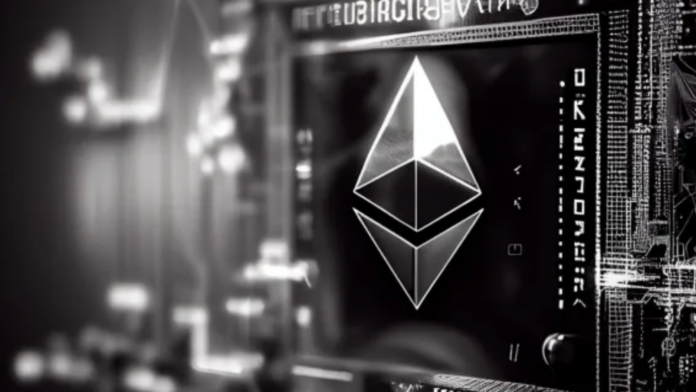In their second attempt to launch the Holesky testnet, Ethereum developers are proving their determination to overcome previous setbacks. After a failed initial launch earlier this month, the relaunch of Holesky appears to be on the path to success. The testnet, designed to assist large-scale smart contract projects, is expected to have a capacity greater than Ethereum’s current test networks. With the potential to attract major projects and address scalability issues, Holesky could further solidify Ethereum’s position as a leader in decentralized applications. The efforts put forth by the development team have garnered praise from the digital asset community as they work towards creating a platform that will shape the future of the Ethereum ecosystem.
Ethereum Developers Make Second Attempt to Launch Holesky Testnet After Previous Flop
Overview
In the world of Ethereum development, the launch of a new testnet – a network that allows developers to test their applications and smart contracts – is a significant event. Recently, Ethereum developers made their second attempt to launch the Holesky Testnet after facing a previous failure. This article will provide an overview of the initial launch, the design of the Holesky Testnet, the reason for the postponement, the glitch that occurred during the launch, the impact of the delay, the successful relaunch, and the importance of the Holesky Testnet. We will also discuss scalability solutions and the future of decentralized applications on the Ethereum platform.
Initial Launch
The initial launch of the Holesky Testnet was scheduled for September 15th, 2023, to commemorate the first anniversary of the Ethereum Merge. The Merge marked a transition in the Ethereum network’s consensus mechanism from Proof-of-Work to Proof-of-Stake. This transition was expected to eventually phase out the Goerli testnet by 2024. Unfortunately, the launch encountered several hiccups just a few hours after it began, leading to its failure.
Holesky Testnet Design
The Holesky Testnet was designed with the objective of aiding the largest smart contract projects by providing a test network with greater capacity than Ethereum’s existing test networks, Goerli and Sepolia. The network was expected to have approximately 1.4 million validators, double the size of Ethereum’s current network. This increased capacity aimed to address the scaling issues present on the testnet and provide a more robust testing environment for developers.
Reason for Postponement
The launch of the Holesky Testnet was postponed due to its vital importance for the future of the Ethereum platform. The testnet was described as a solution that would be in use for years and play a crucial role in the rollout of the Dencun hardfork. This delay allowed the developers to address the issues that arose during the initial launch and ensure a more successful relaunch.
Launch Glitch
During the first attempt at launching the Holesky Testnet, a glitch occurred that prevented the network from successfully initializing. The glitch was attributed to incorrect data input and a configuration mismatch in the Genesis files. Specifically, an incorrect data string was included in the EL Holesky genesis.json file, causing the network to fail to launch. Additionally, there were rumors of other configuration mismatches in the fork parameters of the releases. These issues necessitated the relaunch of the testnet to address the network failure.
Impact of Delay
The delay in launching the Holesky Testnet had several impacts on the Ethereum community. Firstly, it allowed the developers to identify and address the issues that caused the initial failure, ensuring a more successful relaunch. Secondly, the delay highlighted the importance of testnets in the development process and the need for thorough testing and troubleshooting before launching a network. Finally, the delay emphasized the critical role of testnets in providing a stable and scalable environment for developers to build and test their applications.
Successful Relaunch
After addressing the issues that caused the initial failure, Ethereum developers successfully relaunched the Holesky Testnet. The relaunch process was livestreamed, and early indications suggested that the launch was successful. The Ethereum community reacted positively to the relaunch, acknowledging the efforts of the developers in bringing Holesky to fruition. The successful relaunch restored confidence in the Ethereum ecosystem and paved the way for further development and innovation.
Importance of Holesky Testnet
The Holesky Testnet holds great importance for the Ethereum platform and the wider blockchain industry. With its increased capacity and enhanced scalability, the testnet is expected to attract major smart contract projects that require a robust testing environment. The ability to test and troubleshoot applications on a large scale will contribute to the advancement of decentralized applications (DApps) and drive innovation in the Ethereum ecosystem. The Holesky Testnet represents a significant milestone in Ethereum’s journey towards becoming the go-to platform for DApp development.
Scalability Solutions
The launch of the Holesky Testnet brings with it the promise of enhanced scalability and performance for the Ethereum platform. By providing a test network with a greater capacity and improved scaling capabilities, Ethereum developers can experiment with and optimize their applications before deploying them on the mainnet. This testnet serves as a crucial stepping stone towards addressing the scalability challenges that the Ethereum network has faced in the past. It allows developers to test and refine solutions such as layer-two scaling solutions, sharding, and other scaling techniques to ensure the continued growth and success of the platform.
Future of Decentralized Applications
The successful launch of the Holesky Testnet has significant implications for the future of decentralized applications (DApps) on the Ethereum platform. With the enhanced scalability and performance offered by the testnet, developers can build and deploy more complex and sophisticated DApps that can handle a larger user base and higher transaction volumes. This increased scalability opens up new possibilities for DApp innovation across various industries, including finance, gaming, supply chain management, and more. The Holesky Testnet paves the way for the advancement of DApp development on Ethereum and solidifies its position as a leader in the blockchain space.
In conclusion, the relaunch of the Holesky Testnet by Ethereum developers marks a significant milestone in the platform’s journey towards scalability and innovation. The successful launch after the initial flop demonstrates the resilience and dedication of the Ethereum community in overcoming challenges and pushing the boundaries of blockchain technology. With the Holesky Testnet, Ethereum is well-positioned to attract major smart contract projects and further cement its role as the go-to platform for decentralized applications. The future of DApp development on Ethereum looks promising, and the Holesky Testnet plays a vital role in advancing this innovation.

















